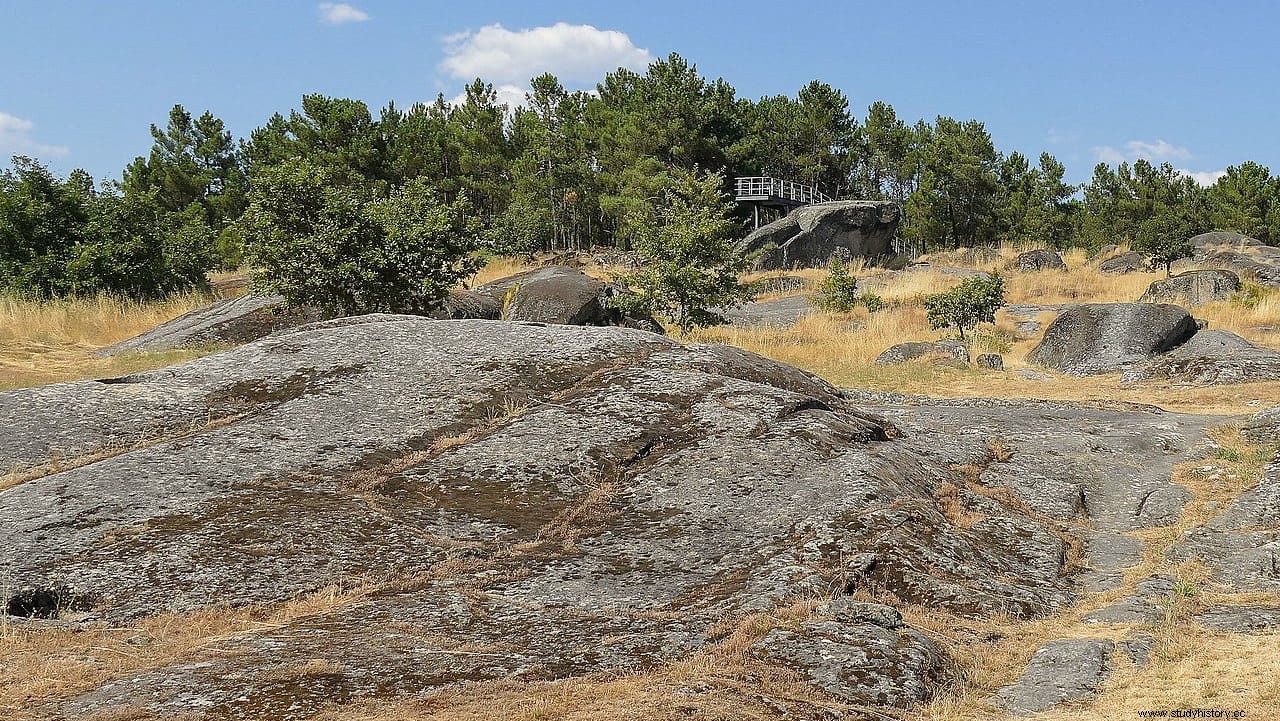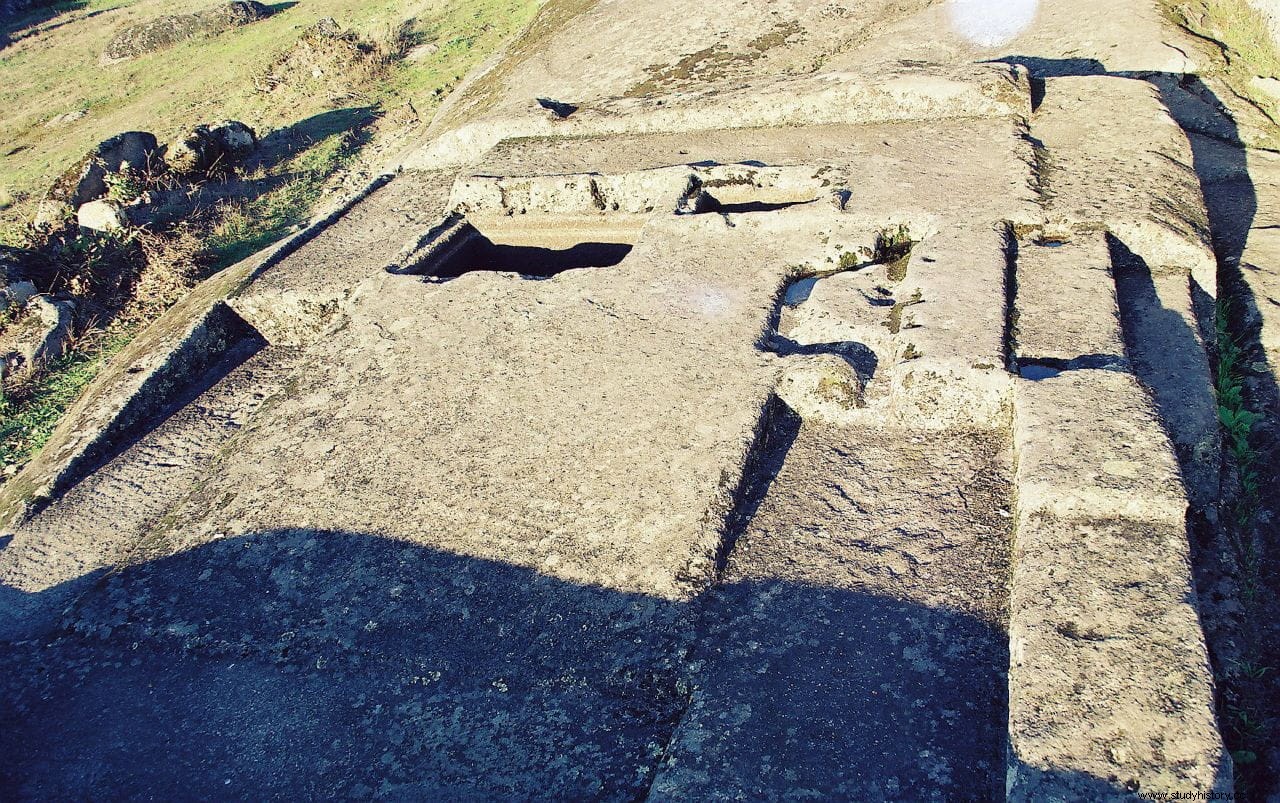Next to the village of Assento in the council of Vila Real, in the north of Portugal, there is a curious rocky enclosure in which several cavities of different sizes are carved. Although at first glance some of them may seem natural, they are actually part of a Roman sanctuary built between the end of the 2nd century and the beginning of the 3rd century AD.
Three large rocks or granite hills stand out in which, in addition to the cavities, access stairs were carved. In them there are vestiges of the small temples that were part of the enclosure. The rectangular cavities were used to burn the entrails of animals. The round cavities were used to roast the meat (the slots that supported the iron grill being visible) that was consumed on the spot, and to clean the fat and oil.
Other smaller cavities are related to the temples and were used to store the sacred instruments used in rituals. There is also a small group of purificatory ponds, where the faithful washed before the rituals.

Only the foundations of the temples remain, but many of their ashlars can be traced in the walls of the houses of the neighboring village and in the pavement of their church. The remains of two pre-Roman altars are preserved on the eastern side, which indicates that the place was already sacred before the construction of the Roman sanctuary.
Various inscriptions inform us that Senator Gneo Cayo Calpurnio Rufino, who was probably in charge of exploiting the Tresminas and Jales gold mines (in the current municipality of Vila Pouca de Aguiar), was the one who built the sanctuary.

The inscriptions, three in Latin (one destroyed during the last century, but rebuilt) and one in Greek, are on a rock at the entrance to the enclosure. They describe the ritual that was celebrated there and to whom it was dedicated:to Serapis, a Greek-Egyptian syncretic divinity identified with Pluto, the god of the underworld, but also of healing, and the other gods of the other world.
In the sanctuary, initiation rituals would be carried out in the mysteries of the deities of the underworld, which would have been introduced in the area by Rufino himself. Due to its use in the Greek inscription of a Doric dialect, it is believed that it could have originated in Perge, a city of Pamphylia (today on the southwest coast of Turkey) of Doric tradition that was precisely one of the main centers of the cult of Serapis. in the late 2nd century AD, when Rufinus built the sanctuary.

One of the Latin inscriptions reveals that, indeed, the enclosure was already sacred before, since it mentions the gods of the Lapitae , the native community of the area (another hypothesis considers them to be the spirits of the rocks ):

A path, possibly the rock-cut route of the ritual procession, leading from the foot of the hill to the top connects the three sites in the enclosure. The sanctuary is unique, not only in the entire Iberian Peninsula, but in the world, as Amilcar Guerra writes:
It is considered a national monument of Portugal since 1910.
